subsTANZ massimo gerardi
KM
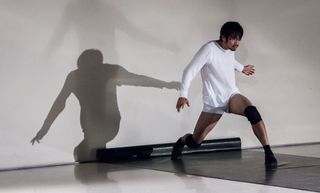
KM
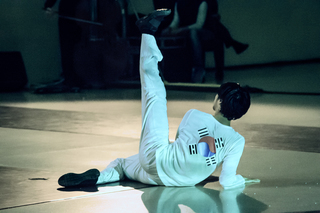
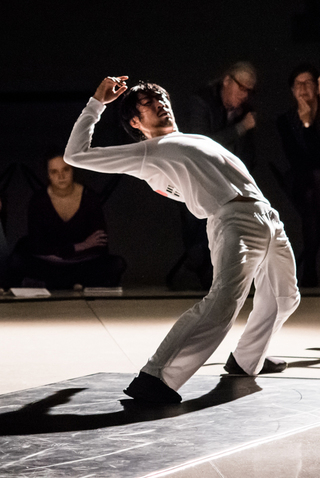
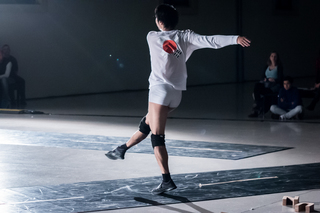
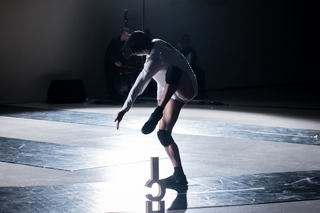
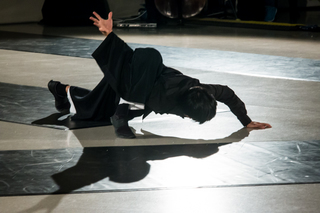
A dance performance about migration in the arts
Idea, choreography, sets: Massimo Gerardi
Dance, additional choreography: Yuya Fujinami
Music: Sebastian Rehnert
Stage and light concept: Ted Meier
Dramatic advice: Katrin Endres
Photos: Ian Whalen
Vorsteelungen in: DRESDEN Albertinum/Staatliche Kunstsammlungen - KÖLN Museum für Ostasiatische Kunst GIESSEN Festival TANZART - BUKAREST Linotip
With references and parallels to researches by Katrin Endres about the almost forgotten dancer Kuni Masami - who lived in Germany during the NS regime - the choreographer Massimo Gerardi presents a dance performance about migration in the arts. Disorientation, loss of native values, assimilation and cultural exchange obliges the artist, today as much as at that time, to assume a particular position in the society. This situation not only stimulates to question political systems - as Kuni Masami in his book Berurin sensô – but it can enable the artist to reach a fruitful creation as well. The dichotomy of "foreign" and "homely", regarded as emotions or states of mind, triggers new identity concepts arousing from the controversy between social affiliation and (in)possibility of positioning in the new environment. Beyond the loss there is a chance for creative impulses to explore something new, perhaps unexpected and unique...
Supported by:
Bezirksregierung Köln
Amt für Kultur und Denkmalschutz Dresden
In cooperation with:
Albertinum/Staatl. Kunstsammlungen - DRESDEN
Museum für Ostasiatische Kunst - KÖLN
Eine Tanzperformance über Migration in der Kunst
Choreographie, Ausstattung, Produktion: Massimo Gerardi
Tanz, choreographische Mitarbeit: Yuya Fujinami
Musik: Sebastian Rehnert
Bühnen- und Lichtkonzept: Ted Meier
Dramaturgische Beratung: Katrin Endres
Photos: Ian Whalen
Performances in: DRESDEN Albertinum/Staatliche Kunstsammlungen - KÖLN Museum für Ostasiatische Kunst GIESSEN Festival TANZART - BUKAREST Linotip
Mit Bezügen und Parallelen zu einer Recherche von Katrin Endres über den nahezu vergessenen asiatischen Tänzer Kuni Masami, der zur Zeit des NS-Regimes in Deutschland lebte, präsentiert der Choreograph Massimo Gerardi eine Tanzperformance über Migration in der Kunst. Desorientierung, Verlust der heimatlichen Werte, Anpassung und transkultureller Austausch weisen dem Künstler damals wie heute eine besondere Stellung innerhalb der Gesellschaft zu. Eine Position, die nicht nur dazu anregt, politische Systeme zu hinterfragen – wie Kuni Masamis Buch Berurin sensô beschreibt – sondern die auch zur künstlerischen Kreativität befähigen kann. Die Dichotomie von Heimat und Fremde bringt durch eine intensive Auseinandersetzung mit der eigenen Zugehörigkeit und der (Un)Möglichkeit ihrer Verortung neue Identitätskonzepte hervor. Jenseits des Verlusts liegt die Chance und der kreative Impuls zu etwas Neuem, vielleicht Unerwartetem, Einzigartigem...
Unterstützt von:
Amt für Kultur und Denkmalschutz Dresden Bezirksregierung Köln
In Kooperation mit: Albertinum/Staatliche Kunstsammlungen - DRESDEN Museum für Ostasiatische Kunst - KÖLN
JavaScript is turned off.
Please enable JavaScript to view this site properly.